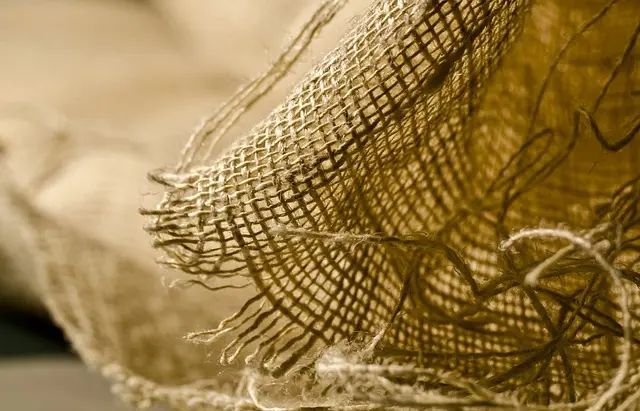Muscle soreness, particularly delayed onset muscle soreness (DOMS), is a common issue for those engaging in physical activities. Both kratom and kava tea, with roots in traditional Southeast Asian medicine, are being explored as natural remedies for managing this discomfort. Kratom's active compounds, mitraphylline and 7-hydroxymitragynine, can interact with opioid receptors to provide pain relief, while kava tea offers calming and analgesic effects due to its kavalactones. The correct preparation of kava tea involves grinding the root into a fine powder, steeping it in water to extract the beneficial compounds, and then filtering and diluting the infusion to taste and strength preferences, ensuring safety and efficacy. It's crucial to follow precise guidelines for both kratom and kava dosages and preparation to avoid potential negative effects and to consult healthcare professionals before combining them with other treatments. These botanical supplements can be a part of a holistic approach to muscle soreness that includes good hydration, balanced nutrition, and adequate rest, provided they align with your individual health considerations. Always remember to use high-quality sources for both kava and kratom and to integrate them responsibly into your wellness routine for the best outcomes.
Muscle soreness can be a persistent and debilitating issue for many, particularly those who engage in intense physical activities or have chronic pain conditions. Exploring natural remedies, individuals often turn to kratom supplements, a topic of increasing interest due to their potential analgesic properties. This article delves into the intricate relationship between muscle soreness and the role of kratom in providing relief, offering insights into effective kava tea preparation as a complementary method, and guiding readers on how to integrate kratom supplements into their muscle soreness management routine. Understanding the nuances of these remedies is key for those seeking alternative pain management solutions.
- Understanding Muscle Soreness and Kratom's Role in Relief
- Preparing Effective Kava Tea as a Complementary Approach to Muscle Soreness
- Integrating Kratom Supplements into Your Muscle Soreness Management Routine
Understanding Muscle Soreness and Kratom's Role in Relief

Muscle soreness, often characterized by discomfort or pain in the muscle tissues, can arise from various activities including intense exercise, overuse, or even minor injuries. This phenomenon, known as delayed onset muscle soreness (DOMS), is a common experience for individuals engaging in physical activity, particularly when re-introducing certain movements or when the intensity of exercise is significantly higher than usual. Understanding the underlying mechanisms is crucial for devising effective relief strategies. In this context, kratom supplements have garnered attention for their potential role in alleviating muscle soreness. Mitragyna speciosa, commonly known as kratom, is an tropical evergreen tree native to Southeast Asia whose leaves have been traditionally used for pain management and relaxation. The active compounds found in kratom, namely mitraphylline and 7-hydroxymitragynine, are believed to interact with the body’s opioid receptors, providing a natural analgesic effect. This interaction can help manage the pain associated with muscle soreness, potentially reducing recovery time between workouts. For those interested in experimenting with kratom for its pain-relieving properties, understanding how to make kava tea is a valuable skill. Kava, a beverage made from the roots of Piper methysticum, shares some medicinal properties with kratom and can complement its effects. Preparing kava tea involves soaking the kava root in water for several hours or grinding it into a powder and mixing it with hot water before straining. This dual-herb approach may enhance the pain-relieving experience, offering a holistic solution for muscle soreness relief. As always, it is imperative to use these supplements responsibly and within the recommended dosages to avoid adverse effects. Consulting with a healthcare professional before integrating kratom into your wellness routine is advisable to ensure safety and efficacy.
Preparing Effective Kava Tea as a Complementary Approach to Muscle Soreness

When exploring natural remedies for muscle soreness, preparing effective kava tea can be a complementary approach that many find beneficial. Kava, a peppery, grounding beverage made from the roots of Piper methysticum, is traditionally used in certain South Pacific cultures for its calming and analgesic properties. To craft this tea effectively, one must first select high-quality kava root from reputable suppliers to ensure potency and safety. The preparation process involves grinding the kava roots into a powder and then mixing it with water to extract the active compounds known as kavalactones, which are responsible for its unique effects.
The traditional method of preparing kava tea involves pounding the kava root into chunks, which are then grated or ground into a fine powder. This powder is traditionally mixed with water in a muslin cloth or a specialized kava strainer to create an infusion. The resulting liquid can be further filtered and diluted according to personal preference for taste and potency. It’s important to follow specific guidelines to achieve the right concentration, as too much kavalactone can lead to less desirable effects. To enhance the tea’s benefits for muscle soreness, some individuals combine it with other supplements like kratom, which is also known for its pain-relieving and mood-elevating properties. Always consult with a healthcare provider before combining kava and kratom, as both substances can interact with medications and may have contraindications or side effects. With careful preparation and consideration of individual health factors, kava tea can be an effective complementary strategy for addressing muscle soreness alongside conventional therapies.
Integrating Kratom Supplements into Your Muscle Soreness Management Routine

Integrating Kratom supplements into your muscle soreness management routine can be a valuable addition for those seeking natural relief. Kratom, derived from the leaves of the Mitragyna speciosa tree, has been traditionally used in certain regions for its potential benefits on pain and well-being. When incorporating kratom into your regimen, it’s crucial to adhere to recommended dosages to avoid overconsumption, as the effects can vary depending on individual sensitivity and the specific strain of kratom used. For those interested in also exploring how to make Kava tea, a beverage from the Pacific Islands known for its calming properties, it’s important to follow traditional preparation methods to ensure safety and efficacy. While kava is distinct from kratom, both are botanical supplements that can influence one’s sense of comfort and relaxation. To maximize the effectiveness of kratom for muscle soreness, consider pairing it with adequate hydration, a balanced diet, and restful sleep, as these factors contribute to overall recovery and pain management. Always consult with a healthcare provider before starting any new supplement regimen to ensure it aligns with your health needs and does not interfere with other medications or conditions. With careful consideration and professional guidance, kratom can be a thoughtful complement to your existing muscle soreness relief strategies.
Muscle soreness can be a significant impediment to maintaining an active lifestyle. Understanding its origins and exploring effective relief strategies, such as incorporating kratom supplements, plays a crucial role in managing discomfort. Preparing kava tea, as outlined in our guide on how to make kava tea, offers a complementary approach that may enhance the soothing effects experienced from kratom. Integrating these methods into a consistent routine can potentially alleviate muscle soreness and support overall well-being. By leveraging the insights provided in this article, individuals can find alternative ways to address muscle soreness effectively.






